Humanity’s Milestones in Space Exploration
Event Location: Virtual
Competition: Energy Transfer Machine
Division: 6-8
School: Kennedy Middle
Team Name: Sputnik Car
Project Name: Humanity’s Milestones in Space Exploration
Team Size: 4
Kennedy Middle School’s
Team Sputnik Car
Theme: Humanity’s Milestones in Space Exploration
Team Members: Anderson W. (7th), Darren R. (8th), Giahna C. (8th), Eva B. (8th)
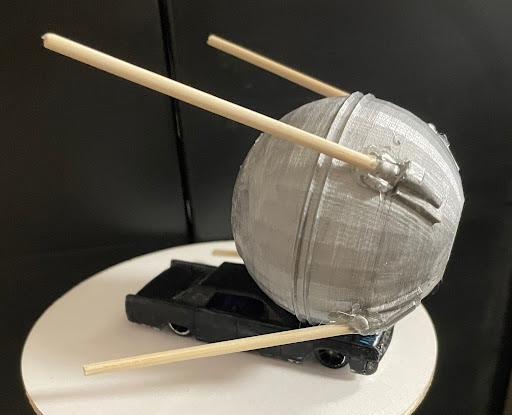
Introduction Link:
Machine Run Link:
-The Energy Transfers-
(Total 14)
The machine’s goal? To lift a model rocket upwards!!
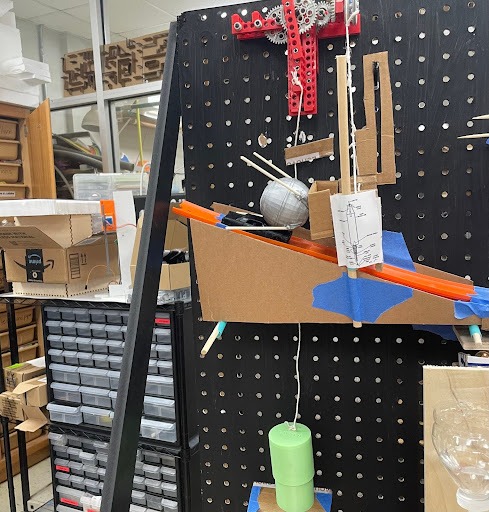
1. Pressing a button labeled “LAUNCH!!!” down causes a string that is attached to it to be pulled down.
2. The force of the string rotates the first gear of a system. Using varying sizes of gears, the system is able to pull another string further up than the initial one that was pulled down. The string that was pulled up by the gears is attached to a blockade themed as Goddard’s rocket.
3. The removal of the blockade allows a ‘Sputnik Car’ to travel down a ramp.
3.5. The Sputnik car on its way down, knocks 4 wooden blocks off of the platform, pulling down 4 strings attached to papers themed as early rockets and revealing “3, 2, 1, and Lift Off” underneath.
4. One of the blocks that gets knocked down triggers a marble which goes down a few inclined planes. At the end, the marble hits a domino.
5. A string attached to the domino and a cork(the tip of a pencil) is pulled down releasing water into a dish on a lever. When enough water is released the lever goes down on one side.
6. When the lever comes down, it hits the start of a series of dominoes that slowly increase in size.
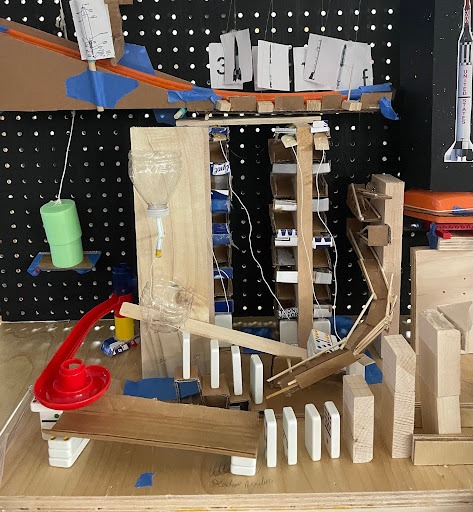
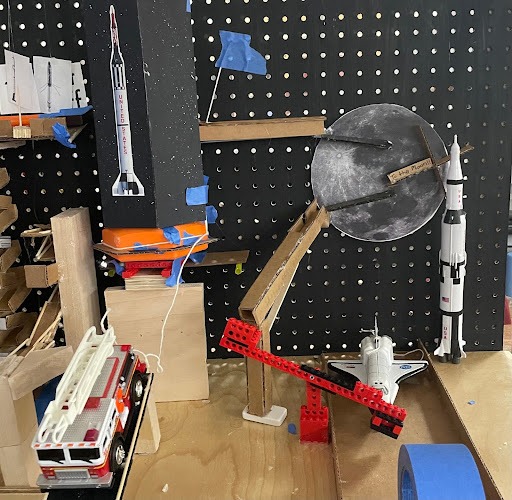
7. The largest of the dominoes pushes down a toy car off the platform. A string attached to the mercury rocket-themed screw unwinds from around the base.
8. The string, being attached to the screw, causes it to rotate around its axle. This sends the threaded platform on the screw upwards.
9. The rising platform bumps into a marble track pushing that track upward and sending it downwards onto a marble run themed after the moon to show the milestone in which the Apollo program got the first man to the moon.
10. The marble run begins with an inclined plane which leads the marble onto a platform on a wheel and axle which rotates until the marble is able to roll down further.
11. The marble comes down another inclined plane into a chute which the marble falls through.
12. Once the marble falls through it weighs down one side of a lever which when lifted up releases a previously blocked Atlantis shuttle model down a track.
13. When the Atlantis shuttle is released it hits into a roll of tape with a string attached to a stopper in the middle of a chute. When the string is pulled it removes
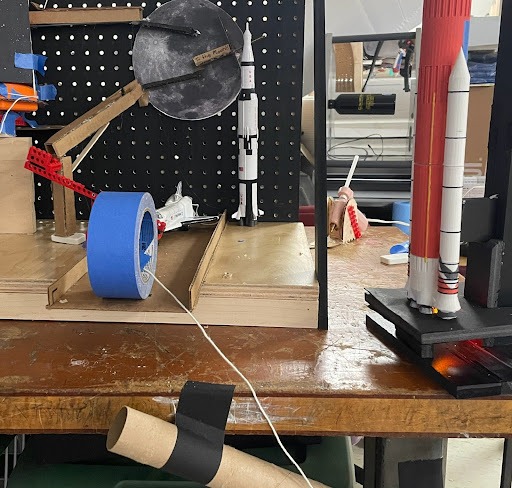
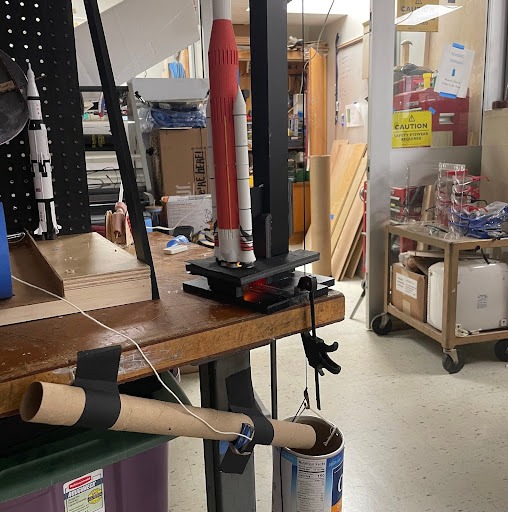
14. With the extra weight of the dominos, the bin, which is attached to a pulley, weighs down one end of said pulley lifting the other end upwards. This other end carries the model SSL rocket fully lit up and in flight and with that…
Mission Completed!!
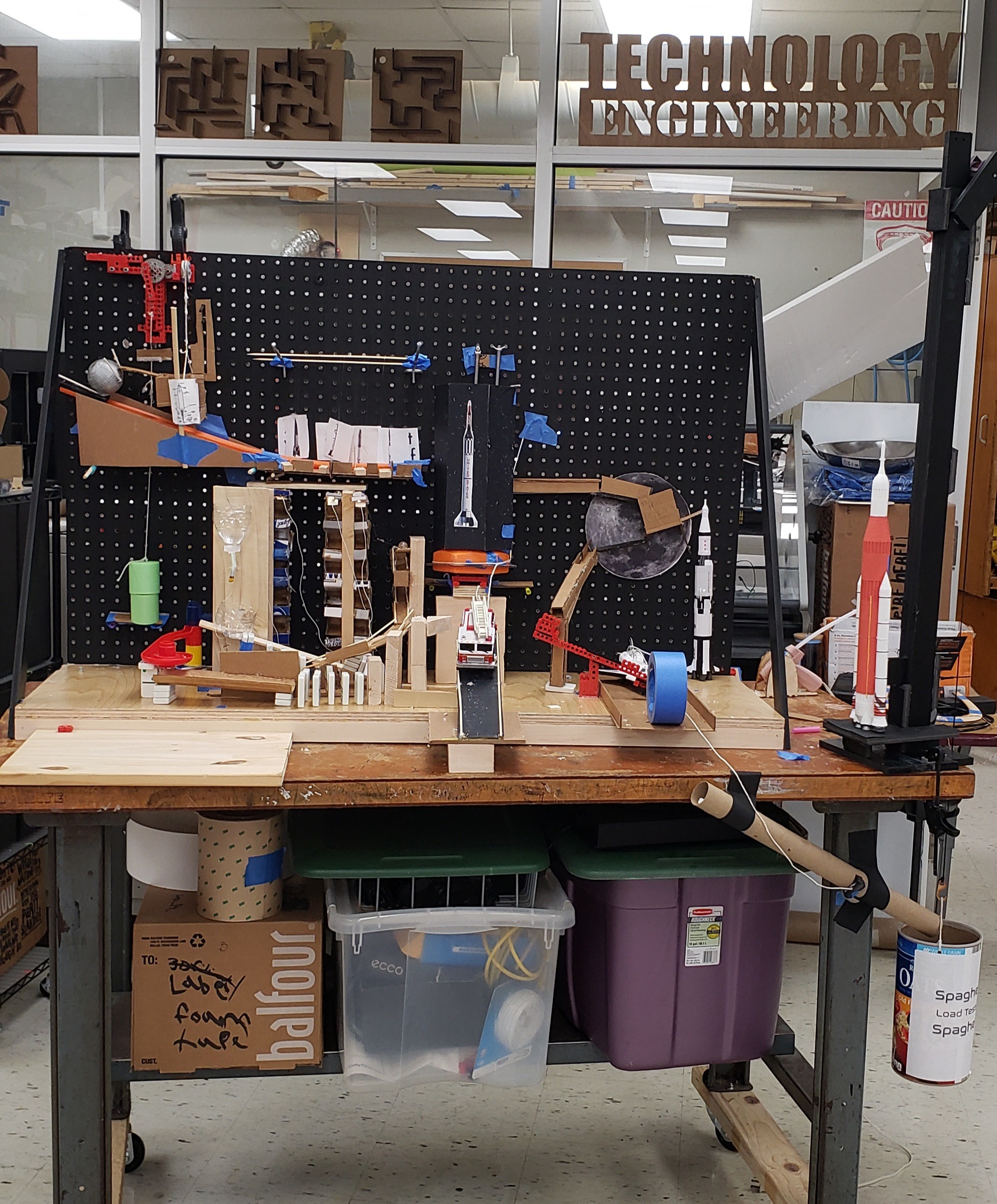
The Construction Process
“Not because they are easy, but because they are hard because that goal will serve to organize and measure the best of our energies and skills because that challenge is one that we are willing to accept, one we are unwilling to postpone, and one we intend to win”
-John F. Kennedy
Part One: A Theme
The first step our team wanted to take, after of course understanding the challenge we were facing, was to figure out a theme. The team explored ideas such as computers or even nightmares but ended up going for something to do with space. Originally, the machine would go through the steps needed to launch a rocket but as time went on we decided that exploring humanity’s milestones in space travel would be interesting and a great opportunity to learn and explore some history. What could be more fitting for Kennedy Middle School than an ode to the age of Kennedy and the space race?
Part Two: A Plan
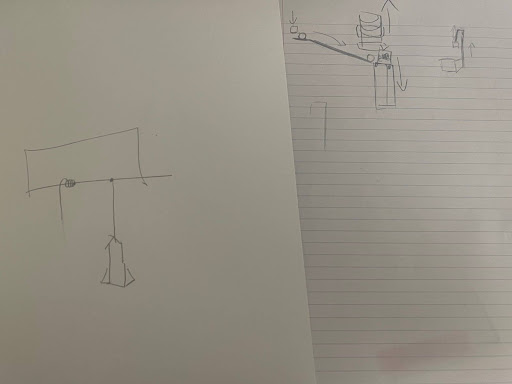
In the early stages, our group went through multiple outlines and ideas. It took far longer than expected to figure out a full plan but in the end, we succeeded. Here are sketches for the screw and final task/pulley
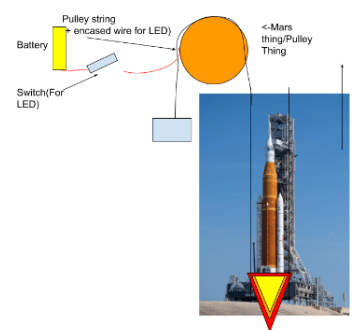
Part Three: Early Development
The first part that was worked on in our group was the Sputnik car. At first, the car was a prototype made of Legos with a loose wheel that often rolled off when turned. Over time, the car became an inside joke and we couldn’t pass up the opportunity to name our team after it. Below are images of the 3D models that were made for printing the final version on TinkerCad:
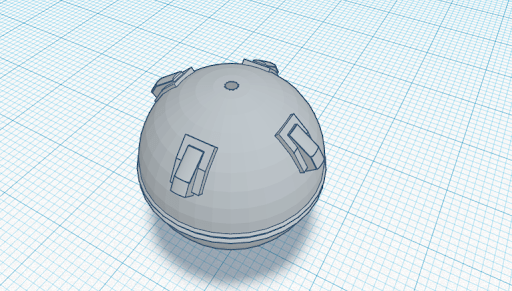
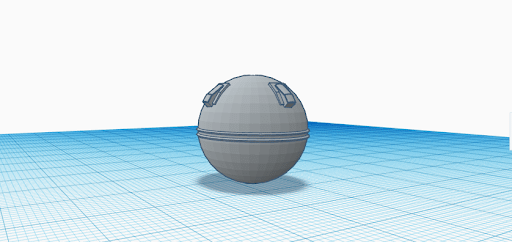
Part Four: Main Development
As we took our time planning each and every part, communicating our ideas, and carefully building each component, we ran into an issue: time. Before we knew it we were working on the machine every day during lunch and class in order to get the machine done. Here’s our hard work in the form of pictures!
Bonus! The Issues and Complexities:
Other than time, our team faced lots of difficulties in the making of our machine. The screw that was used to carry a force upwards was a big one. It took a while to figure out how to get the base to rotate while also keeping the threaded platform from spinning. Eventually, we were able to get an axle in the bottom of the screw with a string wound up around it and then tied it to a car. By then putting the axle in a holder we were able to get the screw from moving while still allowing it to rotate. As for the platform part, we used old straws we found along with metal rods as guide rails to get the platform to only go up, not rotate.
Another complex part that took a while to figure out was the gear system. To use the short distance supplied by pushing a button in order to lift up a full cardboard piece. From the first day of planning, we knew that gears would be in use. However, we later found that there wasn’t a big enough and a small enough gear only to use two gears as we had originally planned. This led to lots of tinkering with gears and gear systems to get enough rotation to pull the blockade fully up.
A different part of the machine that took a lot of brainstorming was figuring out how to make the final rocket light up. We decided to use our one electrical component to add fire-colored LEDs into the rocket model but how to do that was a mystery. Eventually, we strayed from the original design and ended up soldering the lights and wires together and then threading them through the rocket to create the fire-colored lighting.

Very creative integration of the space exploration theme and great energy transfers and project overall.